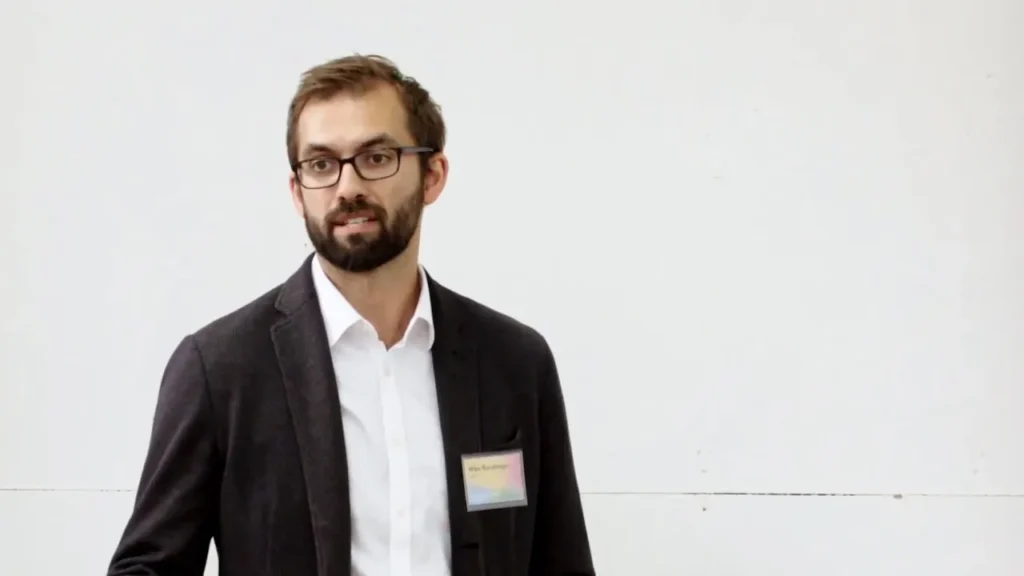Our world is an ever-evolving reflection of humanity, and our buildings are a record of our history. Yet our history is our vessel to our future, and our buildings should be engineered to facilitate humanity’s best passage forward. With the onslaught of climate change and its deleterious effects on human health and wellbeing, there is a growing interest in solutions to mitigate its impact and build resilient structures to protect future generations.
The Lancet Countdown on Health and Climate Change gives critical insights into where we stand as a global population. In 2023, the world recorded its highest temperature records, sparking concern, debate, and action to tackle the threat of climate change.1 As leaders worldwide have agreed to limit the rise in global average temperatures to 1.5 degrees Celsius, it has become apparent that the world is on a trajectory to surpass that mark, with some predictions calling it as close as around a decade from now.2 With rising temperature levels, there is a projected increase in heat-related health conditions with subsequent increased pressure on our health systems, increased mortality in our ageing populations, and decreased worker productivity.1 Our cities and our buildings are prime targets for mitigating these effects, and as such, solutions have been generated by some of the greatest minds to address climate change and its effects on heat.
Nature-Based Solutions (NBS) and urban greening have emerged as key contributors to reducing heat and heat-related health concerns in cityscapes. NBS are solutions based on natural processes that address societal challenges while promoting human wellbeing and reinforcing biodiversity.3 It’s a way to enhance the planetary ecosystem if conducted on a global scale. There are multiple types of nature-based solutions, and as the term describes, they help alleviate the societal impact of an identifiable problem. In a study by Shanahan et al., 2019, nineteen experts from seven countries identified twenty-seven nature-based interventions aimed at improving human health and wellbeing.4 Interventions ranged from the simple provision of gardens within healthcare institutions and the provision of Nature within rooms to citywide interventions and green prescriptions. Their contributions to health included:
- The prevention of chronic health conditions.
- Promotion of general wellbeing.
- The treatment of specific physical, mental, or social health and wellbeing issues.4
The impact of Nature-Based Solutions on health
The health of the environment is intricately tied to human health. NBS and their impact on health draws on the theory of biophilia. First coined by the German philosopher Erich Fromm, biophilia defines the psychological attraction to all things alive and vital.5 Later, the term became more popular with the famous biologist Edward O. Wilson, who posited that humans have an innate tendency to focus on life and lifelike processes.5 On further exploration, an even closer look at Nature and its sensory impact on humans shows that visual and aural senses are positively stimulated by Nature, increasing positive emotions and behavioural responses. This resultant positivity and calm fosters environments that promote more positive social interactions and activities, resulting in a healthier society.
Theoretically, two frameworks that can generally be applied to human mental faculties in terms of the impact of NBS on health have been identified. One is the Stress Reduction Theory by Ulrich, which found that exposure to nature results in positive psychological changes, reduced negative feelings, and increased positive emotions.6 The second theory, though different, is also related to emotional states. This theory is the Attention Restoration Theory by Kaplan, which purported that exposure to Nature as a getaway serves as a refreshing experience when individuals seeking refuge in Nature are immersed in Nature away from their habitual stimulation and can naturally appreciate the subtleties of their surroundings.6 Yet we recognize that Nature’s impact on human health is all-encompassing and extends beyond these two frameworks, leaving much room for research and development.
While on large scales, the addition of green Infrastructure to grey settings is aesthetically pleasing, plants serve as natural carbon sinks and air filters, reducing air pollution while cooling the atmosphere through the provision of shade and the natural process of evapotranspiration, resulting in a reduction in the urban heat island effect.7 Additionally blue infrastructure is equally beneficial to human wellbeing particularly in its heat mitigation effects via mechanisms such as the albedo effect, groundwater recharge, and temperature buffering resulting in a cooler microclimate.7 Consequently, humans, especially vulnerable population groups, are exposed to lower degrees of air pollution and heat, positively impacting on human morbidity and mortality. In fact, if we take a look at the vulnerable populations within society, we’d learn a lot about the mechanisms NBS play in enhancing health.
For children, nature-based environments act as irreplaceable play partners, fostering curiosity and growth as they stimulate their senses and are responsive to their actions—this feature of nature aids in supporting physical and cognitive development while promoting socio-emotional activity.8 In addition to these benefits, Nature promotes learning through increased environmental awareness and enjoyment and reduced stress levels, improving core skills such as discipline, critical thinking, problem-solving, resilience, and teamwork.9
In an ageing population, in addition to preserving life and longevity and enhancing quality of life, the integration of NBS and caring for Nature can contribute to improved functionality in older adults and healthy aging.10 One review even attributed that exposure to nature decreased blood pressure and reduced inflammation and activation of the immune system, contributing positively to the cardiovascular, pulmonary, and neuro-immuno-endocrine systems.11 With these advancements, further studies are needed, but the prospects are positive.
The transition to motherhood is yet another vulnerable phase in life, and ways in which maternal health, wellbeing, and mental resilience can be enhanced should be explored. In relatively few studies, the impact of NBS has been found to be beneficial in both the pre and post-natal periods. To combat the issue of poor mental health and wellbeing, there has been an increased promotion of green and social prescribing. One UK-wide study elucidated that while young women felt that green and social prescribing enhanced their mental health and wellbeing during pregnancy, concerns were raised about access to services, funding, and longevity of programs.12 Additionally, other studies have reported increased positive birth outcomes in women living near green spaces.13,14 Another study elucidated the beauty of exposure to Nature in the post-partum period simply through sensory awareness and active engagement, which proved beneficial and provided opportunities for shared enjoyment for mothers and infants.15 Yet outside the scope of the programs, if cities and spaces are enhanced with more Nature-Based Solutions, green prescribing, and interventions will be more readily accessible. New developments and opportunities for enhanced human health and wellbeing will occur naturally, from increased exposure to nature-enhanced spaces.
Despite our awareness of the benefits of NBS, we must acknowledge that the implementation of NBS can be limited by socio-economic disparities, and awareness of societal inequalities is vital in integrating solutions at scale. To address this concern, an interdisciplinary panel of experts within the GoGreenRoutes project developed a system known as the Gender, Inclusivity, and Diversity Framework. The framework utilises the tenets of climate justice for the development of public spaces to enhance interaction, participation, and feelings of safety and belonging for all members of society with an increased focus on minority populations.16 This framework will be integral in future development goals.
Common Nature-Based Solutions
NBS can be grouped into three main categories: green, blue, and hybrid.3 These solutions can address a range of concerns regarding environmental, economic, and social impact.
Green NBS are the most common and involve solutions incorporating vegetation and natural elements into the built environment, such as urban green spaces, green roofs and walls, and urban agriculture. Blue NBS, as the term suggests, focuses on water bodies and waterbed elements such as enhancing coastal ecosystems for flood protection and supporting biodiversity. Hybrid Infrastructure combines green and blue elements with traditional grey Infrastructure, such as blue-green Infrastructure (BGI), balcony plantations, and urban agriculture.
One prime example of a nature-based Solution is the Marker Wadden archipelago in the centre of the Netherlands. Excess sediment was taken from the bottom of Lake Markermeer to construct a group of islands to combat biodiversity loss in the region.17 After continuous research on this project, it was found that this solution, despite being in its early stages, has shown positive effects ecologically, providing a habitat for a wide range of resident and migratory birds, improving recreational activity in the area, attracting Nature and bird lovers while promoting the innovative capacity of what’s possible with building with silt.17

Let’s take a closer look at our cities. The C40 Cities Climate Leadership Group is a group of 96 cities around the world representing one-twelfth of the global population and a quarter of the worldwide economy. It is focused on mitigating the effects of climate change by promoting urban action to reduce greenhouse gas emissions and climate risks while increasing the health, wellbeing and economic opportunities of their residents.18 Of the solutions generated, here are two examples of ways in which NBS have been used for positive change.
In 2023, the World Air Quality Report by IQ Air recorded Chicago as having an annual average PM 2.5 level of 13.0 μg/m3, which exceeds the World Health Organisation PM2.5 guideline of 5.0μg/m3 by more than doublefold.19 PM2.5 refers to tiny particles in the air that are 2.5 micrometres or smaller in diameter.20 These particles can come from various sources, including car emissions, industrial processes, and natural sources like wildfires.19 Due to their small size they can be suspended in air for long periods and be inhaled into the lungs and then diffused into the blood-stream.20 This level of PM 2.5 in Chicago indicates poor air quality, and the effects of such can significantly increase health risks.
The Chicago 606 Green Infrastructure project (The Bloomingdale Trail) in the USA showed key benefits. The 606, as it is commonly referred to, is a 2.7-mile park built on a former elevated railroad right-of-way in Chicago.21 The rail line was deeply embedded in Chicago’s history. It was built in 1913 to serve the community’s manufacturing district and connect local manufacturers with the world.21 The area became more residential with time, and the line was underused until all freight traffic ceased in 2001. This under-utilised structure became the home for overgrown vegetation and activities that were detrimental to local residents. Nature’s inevitable reclaiming of the area stimulated ideas, and city leaders and residents sought a mechanism to convert the trail into a more valuable structure for the city.21 After multiple design charrettes involving the greater community, a framework was generated for the site conversion.21 The result involved incorporating green infrastructure with dense perimeter planting and rolling topography to create a pedestrian and bike trail.21 In addition to providing an area with increased social and physical health promotion, the increased greenery in this area positively contributes to reducing air pollution levels. In fact it would be interesting to monitor air quality in this area as compared to another zone with comparably more grey infrastructure.

Barcelona’s Superblocks is also an admirable project, where large pedestrian-friendly zones were created by restricting traffic and promoting green spaces to improve the quality of life of the area’s population and enhance sustainability.22 The Barcelona Superblock unit comprises nine (3*3) urban blocks, creating interior and exterior streets.22 Additionally, the speed limit in Barcelona was capped at 10 or 20 km/hr, reducing vehicular traffic through the city.22 The increased green spaces and decreased traffic reduced air pollution by about 17% and noise pollution of varied levels across the area.23 One study exploring the health impact of the Superblock model, ascertained that this model might prevent 667 premature deaths annually if all the proposed initially 503 Superblocks were implemented.23 This will be due to reductions in nitrogen dioxide, noise, and heat and increases in green spaces with increased physical activity.23 Overall, the model may increase life expectancy in the Barcelona adult population by 200 days, and population health will be improved through increased emotional health, greater socialisation, and enhanced rest.23 Outside of these effects, increased physical activity and use in these zones is likely to increase community engagement and social cohesion.

The findings are consistent: With adequate green,blue,grey infrastructural balance, air pollution is mitigated, urban heat effects are reduced, biodiversity is enhanced, and populations benefit from the health, social, and aesthetic benefits as well as the economic benefits of nature-based solutions.7
Viewpoints on Nature-Based Solutions
While a critical thought process is to renature cities and expose individuals to Nature to promote health, there are other background concerns. What are the effects of rewilding spaces according to human needs? What are the implications of human-engineered renaturing on global biodiversity? NBS provides us with a unique opportunity to revisit our building principles and our impact on Nature as a whole.
Leão et al., 2023 took a unique approach to analysing the relationship between health and Nature by applying a Complex Adaptive Systems model.24 In this analysis, insight was garnered within four significant groups: Aesthetic and emotional experience, multisensory integration experience, knowledge experience, and engagement experience.24 This dive into the interrelatedness between human health and environmental health showed novel ways of integrating these two factors, leading to future research applicability in the use of Nature in a mutually beneficial way to humans and biodiversity.
With more studies showing the benefits of integrating NBS, there still needs to be more research exploring holistic approaches to designing for ecological and human health. One solution to bridge this gap in research are citizen science programs. This research style involves collaborating with scientists and public volunteers to address a specific real-world issue. Williams et al., 2021 decided to explore the proposed value of citizen science for improving human wellbeing.25 While relegating the effects of Nature on the human body as a highly subconscious response, it was suggested that the utilisation of citizen science could serve as a form of initial engagement to NBS as well as prompting interest in its benefits. Such initiatives may lead to changing community and population attitudes to NBS, with the resultant promotion of policy advocacy for sustainable changes in society as a whole.25
The influx of relatively new insights owing to the open accessibility of data, global innovation, and the urgency generated by climate change, encourages the structuring of frameworks to facilitate NBS research and its analysis. Liu et al., 2021, evaluated fifty-two Nature-based solutions and summarised that while categorisations may vary by geographical regions and concepts utilised, there is an increased frequency of use of NBS, showing considerable benefits. They noted these benefits particularly in European solutions implemented on a city scale mainly targeting challenges related to urbanisation and climate change.3 The paper raises questions on integrating critical stakeholder collaboration for a broader scale of planning and implementation to overcome existing barriers and to scale action for human and climate-positive benefits.
Despite the idealism of widening the scale of Nature-Based Solutions for national and even global impact, implementation must be considered for countries within all four income groups (as classified by the World Bank Group). Asamoah et al., 2022 acknowledged the benefits of NBS yet flagged factors within the socio-ecological system that need to be addressed.26 Of these, consideration was given to efforts and effectiveness, social status, legacy of recent change, and ecological conditions. Across 126 nations with a developing economy status, it was ascertained that with the implementation of 8 NBS types worldwide (Reforestation, Natural Forest Management, Improved Rice Cultivation, Grazing – Optimal Intensity, Grazing – Legumes, Peatland Restoration, Avoided Peatland Impacts, Avoided Coastal Impacts – Mangroves)27, the climate mitigation potential amounts to approximately 42% of the global Nature-Based Climate Solutions.26

How do we approach the future?
As humans, we are mere passengers, here for a moment before passing our legacy on to future generations. With our current knowledge, NBS must be used with wisdom to restore the balance between humans and Nature. Overall current findings show the interconnectedness of human health, urban sustainability and environmental stewardship through the implementation of NBS. While we can engineer solutions to serve our current needs, we must think about the planet and how we impact our environment and other species with which we share the world. NBS enhances human health by fostering environments that promote physical, mental and social wellbeing with concurrent environmental benefits such as cleaner air, reduced urban heat, and overall improved environmental quality. Hence, with the urgency of designing to mitigate the effects of climate change and promoting human health and wellbeing, we must also remember to ensure the integrity of the global ecosystem is retained and regenerated over time.

References
1 Romanello, M., Napoli, C. D., Green, C., Kennard, H., Lampard, P., Scamman, D., Walawender, M., Ali, Z., Ameli, N., Ayeb-Karlsson, S., Beggs, P. J., Belesova, K., Berrang Ford, L., Bowen, K., Cai, W., Callaghan, M., Campbell-Lendrum, D., Chambers, J., Cross, T. J., van Daalen, K. R., … Costello, A. (2023). The 2023 report of the Lancet Countdown on health and climate change: the imperative for a health-centred response in a world facing irreversible harms. Lancet (London, England), 402(10419), 2346–2394. https://doi.org/10.1016/S0140-6736(23)01859-7
2 Lamboll, R. D., Nicholls, Z. R. J., Smith, C. J., et al. (2023). Assessing the size and uncertainty of remaining carbon budgets. Nature Climate Change, 13(12), 1360–1367. https://doi.org/10.1038/s41558-023-01848-5
3 Liu H-Y, Jay M, Chen X. The Role of Nature-Based Solutions for Improving Environmental Quality, Health and Well-Being. Sustainability. 2021; 13(19):10950. https://doi.org/10.3390/su131910950
4 Shanahan, D. F., Astell-Burt, T., Barber, E. A., Brymer, E., Cox, D. T. C., Dean, J., Depledge, M., Fuller, R. A., Hartig, T., Irvine, K. N., Jones, A., Kikillus, H., Lovell, R., Mitchell, R., Niemelä, J., Nieuwenhuijsen, M., Pretty, J., Townsend, M., van Heezik, Y., Warber, S., … Gaston, K. J. (2019). Nature-Based Interventions for Improving Health and Wellbeing: The Purpose, the People and the Outcomes. Sports (Basel, Switzerland), 7(6), 141. https://doi.org/10.3390/sports7060141
5 Barbiero, G., & Berto, R. (2021). Biophilia as Evolutionary Adaptation: An Onto- and Phylogenetic Framework for Biophilic Design. Frontiers in psychology, 12, 700709. https://doi.org/10.3389/fpsyg.2021.700709
6 Jimenez, M. P., DeVille, N. V., Elliott, E. G., Schiff, J. E., Wilt, G. E., Hart, J. E., & James, P. (2021). Associations between Nature Exposure and Health: A Review of the Evidence. International journal of environmental research and public health, 18(9), 4790. https://doi.org/10.3390/ijerph18094790
7 Kumar, P., Debele, S. E., Khalili, S., Halios, C. H., Sahani, J., Aghamohammadi, N., Andrade, M. F., Athanassiadou, M., Bhui, K., Calvillo, N., Cao, S. J., Coulon, F., Edmondson, J. L., Fletcher, D., Dias de Freitas, E., Guo, H., Hort, M. C., Katti, M., Kjeldsen, T. R., Lehmann, S., … Jones, L. (2024). Urban heat mitigation by green and blue infrastructure: Drivers, effectiveness, and future needs. Innovation (Cambridge (Mass.)), 5(2), 100588. https://doi.org/10.1016/j.xinn.2024.100588
8 Prins, J., van der Wilt, F., van der Veen, C., & Hovinga, D. (2022). Nature play in early childhood education: A systematic review and meta ethnography of qualitative research. Frontiers in psychology, 13, 995164. https://doi.org/10.3389/fpsyg.2022.995164
9 Hofman-Bergholm M. Nature-Based Education for Facilitating Resilience and Well-Being among Youth—A Nordic Perspective. Education Sciences. 2024; 14(1):43. https://doi.org/10.3390/educsci14010043
10 Sia, A., Tam, W. W. S., Fogel, A., Kua, E. H., Khoo, K., & Ho, R. C. M. (2020). Nature-based activities improve the well-being of older adults. Scientific reports, 10(1), 18178. https://doi.org/10.1038/s41598-020-74828-w
11 Catissi, G., Gouveia, G., Savieto, R. M., Silva, C. P. R., de Almeida, R. S., Borba, G. B., Rosario, K. A., & Leão, E. R. (2024). Nature-Based Interventions Targeting Elderly People’s Health and Well-Being: An Evidence Map. International journal of environmental research and public health, 21(1), 112. https://doi.org/10.3390/ijerph21010112
12 Sands, G., Blake, H., Carter, T., & Spiby, H. (2023). Nature-based interventions to support mental health and well-being of young women in pregnancy: exploratory work for future feasibility RCT. Public health research (Southampton, England), 1–23. Advance online publication. https://doi.org/10.3310/NPGR3411
13 Hu, C. Y., Yang, X. J., Gui, S. Y., Ding, K., Huang, K., Fang, Y., Jiang, Z. X., & Zhang, X. J. (2021). Residential greenness and birth outcomes: A systematic review and meta-analysis of observational studies. Environmental research, 193, 110599. https://doi.org/10.1016/j.envres.2020.110599
14 Xiao, X., Gao, M., Zhou, Y., Xu, S. L., Knibbs, L. D., Heinrich, J., Dharmage, S. C., Morawska, L., Lin, S., Jalaludin, B., Shen, X., Zhou, Y., & Dong, G. H. (2022). Is greener better? Associations between greenness and birth outcomes in both urban and non-urban settings. International journal of epidemiology, 51(1), 88–98. https://doi.org/10.1093/ije/dyab164
15 Hall, K., Evans, J., Roberts, R., Brown, R., Barnes, C., & Turner, K. (2023). Mothers’ accounts of the impact of being in nature on postnatal wellbeing: a focus group study. BMC women’s health, 23(1), 32. https://doi.org/10.1186/s12905-023-02165-x
16 Delbaere, B., Pereira Barboza, E., Van Rafelghem, E., Potter, K., McCabe, E., McBeth, Á., … Keune, H. (2024). The development of a Gender, Inclusion and Diversity Framework for inclusive Nature-based Solutions in cities. Research Directions: One Health, 2, e1. doi:10.1017/one.2023.14
17 Van Leeuwen, Casper & Temmink, Ralph & Jin, Hui & Kahlert, Yvonne & Robroek, Bjorn & Berg, Matty & Lamers, Leon & Akker, Marloes & Posthoorn, Roel & Boosten, Annemiek & Olff, Han & Bakker, Elisabeth. (2021). Enhancing ecological integrity while preserving ecosystem services: Constructing soft‐sediment islands in a shallow lake. Ecological Solutions and Evidence. 2. 10.1002/2688-8319.12098.
18 C40 Cities. C40 Cities – A global network of mayors taking urgent climate action [Internet]. https://www.c40.org/. [cited 2024 Jun 15].
19 2023 World Air Quality Report. IQAir [Internet]. https://www.iqair.com/dl/2023_World_Air_Quality_Report.pdf. [cited 2024 Jun 15].
20 Fongsodsri, K., Chamnanchanunt, S., Desakorn, V., Thanachartwet, V., Sahassananda, D., Rojnuckarin, P., & Umemura, T. (2021). Particulate Matter 2.5 and Hematological Disorders From Dust to Diseases: A Systematic Review of Available Evidence. Frontiers in medicine, 8, 692008. https://doi.org/10.3389/fmed.2021.692008
21 The 606 Framework Plan [Internet]. Chicago (IL): Ross Barney Architects; c2013 [revised 2013; cited 2024 Jun 15]. Available from: https://www.r-barc.com/work/the-606-framework-plan.
22 Eggimann S. (2022). The potential of implementing superblocks for multifunctional street use in cities. Nature sustainability, 5(5), 406–414. https://doi.org/10.1038/s41893-022-00855-2
23 Nieuwenhuijsen, M., de Nazelle, A., Pradas, M. C., Daher, C., Dzhambov, A. M., Echave, C., Gössling, S., Iungman, T., Khreis, H., Kirby, N., Khomenko, S., Leth, U., Lorenz, F., Matkovic, V., Müller, J., Palència, L., Pereira Barboza, E., Pérez, K., Tatah, L., … Mueller, N. (2024). The Superblock model: A review of an innovative urban model for sustainability, liveability, health and well-being. Environmental Research, 251, Article 118550. https://doi.org/10.1016/j.envres.2024.118550
24 Leão, E. R., Hingst-Zaher, E., Savieto, R. M., Patricio, K. P., de Oliveira, L. B., Catissi, G., Lima, L. M., Borba, G. B., Bomfim, S. B., & de Abreu, F. B. (2023). A time with e-Natureza (e-Nature): a model of nature-based health interventions as a complex adaptive system. Frontiers in psychology, 14, 1226197. https://doi.org/10.3389/fpsyg.2023.1226197
25 Williams, C. R., Burnell, S. M., Rogers, M., Flies, E. J., & Baldock, K. L. (2021). Nature-Based Citizen Science as a Mechanism to Improve Human Health in Urban Areas. International journal of environmental research and public health, 19(1), 68. https://doi.org/10.3390/ijerph19010068
26 Asamoah, E. F., & Maina, J. M. (2022). Nature-based climate solutions require a mix of socioeconomic and governance attributes. iScience, 25(12), 105699. https://doi.org/10.1016/j.isci.2022.105699
27 Griscom, B. W., Adams, J., Ellis, P. W., Houghton, R. A., Lomax, G., Miteva, D. A., Schlesinger, W. H., Shoch, D., Siikamäki, J. V., Smith, P., Woodbury, P., Zganjar, C., Blackman, A., Campari, J., Conant, R. T., Delgado, C., Elias, P., Gopalakrishna, T., Hamsik, M. R., Herrero, M., … Fargione, J. (2017). Natural climate solutions. Proceedings of the National Academy of Sciences of the United States of America, 114(44), 11645–11650. https://doi.org/10.1073/pnas.1710465114








